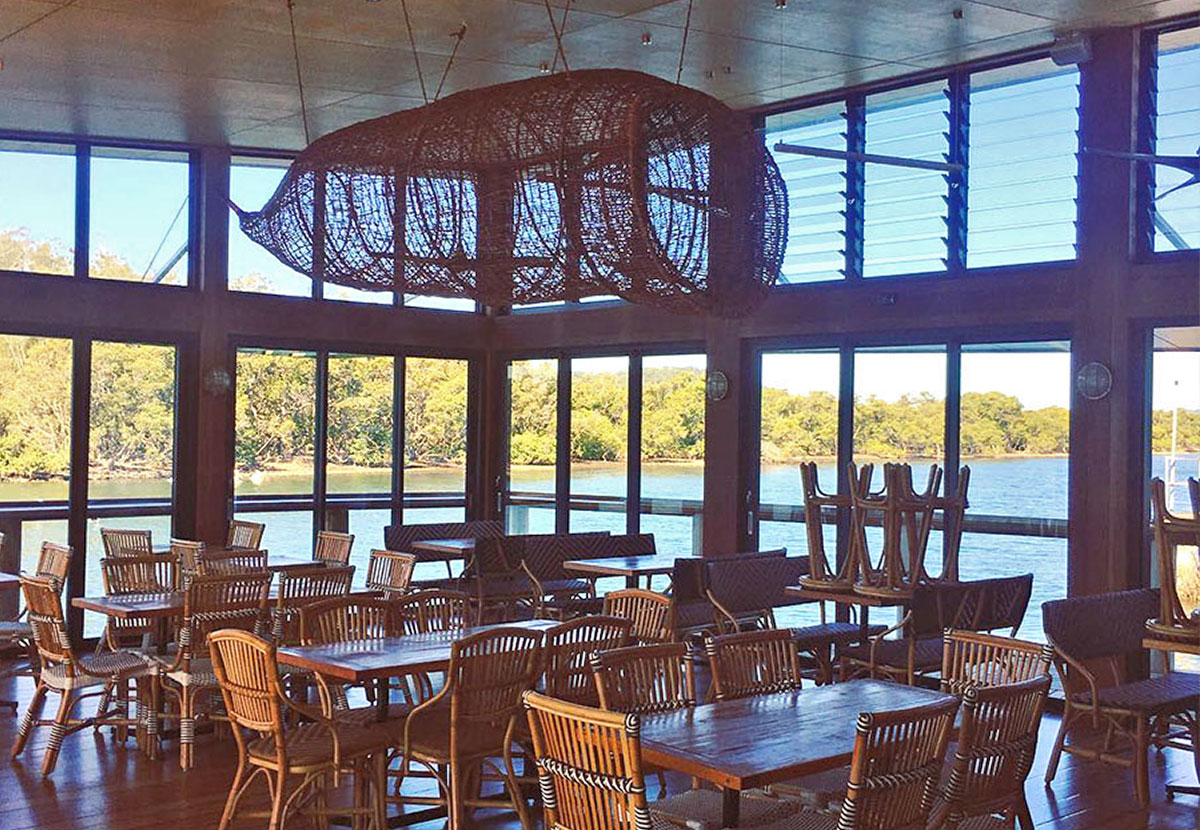TRADITIONAL FISH TRAP
It took around 12 months to research and commission this traditionally made fish trap from Arnhem Land, the wonderful centrepiece of our new restaurant. At four metres long the trap hangs from our lofty ceiling, creating an evocative link to the endless view of water, mangroves and sealife that surrounds you.
The trap was created by Bonny Burarn.garra and Freda Wayartja Ali of the renowned Maningrida Arts & Culture community in northern Arnhem Land. It is a fantastic example of the traditional Burarra fibre weaving that has become highly sought after for exhibition.
The Burarra people have a complex knowledge of ecology and a spiritual relationship with their coastal land. They aim to preserve this knowledge for future generations and also want to share it with others. While these traps are no longer used by the Burarra the skills are still passed on.
Traps like ours were used for thousands of years in rivers, creeks and estuaries when fish were on the move. In the early wet season they swim upstream for breeding in creeks and billabongs, then downstream to spend the dry season in larger rivers. The traps would be set to face the oncoming fish, with woven fencing either side. Within the mouth of the trap is a woven funnel that guides the fish in and prevents their escape. The clever design ensures that only adult fish are caught as smaller fish can escape through the weaving or even through the funnel. The fish that are caught can survive in the trap for up to two months. Once the trap is removed, the end is untied to remove the fish. This sustainable design means the trap can be used again and again.
Commissioning this work is our tribute to one of the oldest and most sustainable fishing methods in the world, and to our commitment to sustainably-sourced seafood.





